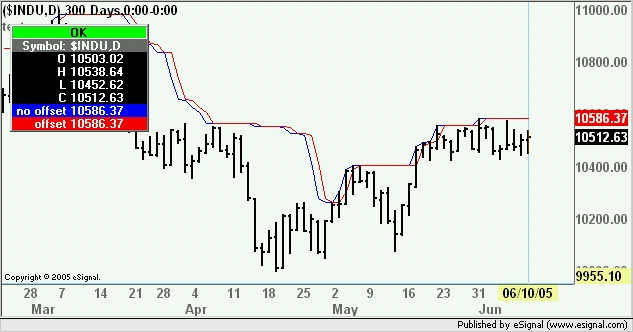Hi,
how can I manage the problem, that the value for a highest high not include the current bar?
Franz
how can I manage the problem, that the value for a highest high not include the current bar?
Franz



function preMain(){
setPriceStudy(true);
setStudyTitle("test");
setCursorLabelName("no offset",0);
setCursorLabelName("offset",1);
setDefaultBarFgColor(Color.blue,0);
setDefaultBarFgColor(Color.red,1);
}
function main(){
return new Array (highest(10,high()), highest(10,offsetSeries(high(),1)));
}

Comment